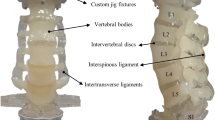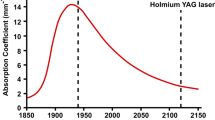Abstract
Objective
Electrophysiology (EP) catheter reprocessing is widespread and previous studies have examined clinical performance, sterility and safety of these reprocessed devices. Here we compare the intrinsic engineering characteristics, electrical, mechanical and safety, between new and reprocessed devices.
Materials and methods
New (58 devices) and clinically used (five times)/reprocessed (165 devices) EP catheters from five manufacturers were employed to examine and compare catheter electrode continuity, electrode isolation, electrical leakage current, shaft torsion and stiffness characteristics as well as tip buckling and bond strengths.
Results
Electrode continuity, isolation and leakage currents for both new and reprocessed EP catheters were within acceptance criteria for electrode continuity (<30 Ω) and shaft electrical leakage (<0.5 mA) as well as electrode isolation (>200 Ω). In addition, reprocessed catheters were equivalent when compared with their new counterparts. While catheter shaft torque forces varied five fold amongst manufacturers, comparison between new and reprocessed devices within a manufacturer showed no significant differences. Likewise shaft stiffness showed no significant difference between new and reprocessed devices. Average tip buckling forces for all catheters were substantially below the acceptance criteria of 0.45 lb (between 0.04 and 0.1 lb) with differences between new and reprocessed catheters not being significant. All bond strengths for both new and reprocessed catheters exceeded the acceptance criteria specified in ISO 10555-1.
Conclusions
This study found that reprocessed EP catheters which had undergone five actual clinical use/reprocessing cycles met and exceeded acceptance criteria specified by industry standards as well as individual manufacturer’s criteria for both electrical and safety characteristics. We conclude that reprocessed EP catheters exhibit electrical, mechanical and safety characteristics which are equivalent to their new counterparts.
Similar content being viewed by others
References
Dunnigan, A., Roberts, C., McNamara, M., Benson, D. W., & Benditt, D. G. (1987). Success of re-use of cardiac electrode catheters. American Journal of Cardiology, 60, 807–810.
Lindsay, B. D., Kutalek, S. P., Cannom, D. S., Hammill, S. C., & Naccarelli, G. V. (2001). Reprocessing of electrophysiology catheters: Clinical studies, regulations, and recommendations. A report of the NASPE task force on reprocessing of electrophysiological catheters. North American Society of Pacing and Electrophysiology. Pacing and Clinical Electrophysiology, 24(8 pt 1), 1297–1305.
FDA/CDRH/OC. Guidance for industry and for FDA staff: Enforcement priorities for single-use devices reprocessed by third parties and hospitals. 1–43. 2000. Rockville, MD, Food and Drug Administration, Center for Devices and Radiological Health, Office of Compliance.
Bloom, D. F., Cornhill, J. F., Malchesky, P. S., Richardson, D. M., Bolsen, K. A., Haire, D. M., et al. (1997). Technical and economic feasibility of reusing disposable perfusion cannulas. Journal of Thoracic & Cardiovascular Surgery, 114(3), 448–460.
Mak, K. H., Eisenberg, M. J., Eccleston, D. S., Brown, K. J., Ellis, S. G., & Topol, E. J. (1996). Cost-efficacy modeling of catheter reuse for percutaneous transluminal coronary angioplasty. Journal of the American College of Cardiology, 28(1), 106–111.
Kozarek, R. A., Raltz, S. L., Ball, T. J., Patterson, D. J., & Brandabur, J. J. (1999). Reuse of disposable sphincterotomes for diagnostic and therapeutic ERCP: A one-year prospective study. Gastrointestinal Endoscopy, 49(1), 39–42.
Dirschl, D. R., & Smith, I. J. (1998). Reuse of external skeletal fixator components: Effects on costs and complications. The Journal of Trauma, 44(5), 855–858.
Ross, D. L. (1997). Re-use of electrode catheters labeled as single use for clinical cardiac electrophysiological studies. Australian and New Zealand Journal of Medicine, 26(5), 632–635.
Avitall, B., Kahn, M., Krum, D., Jazayeri, M., & Hare, J. (1993). Repeated use of ablation catheters: A prospective study. Journal of the American College of Cardiology, 22(5), 1367–1372.
O’Donoghue, S., & Platia, E. V. (1988). Reuse of pacing catheters: A survey of safety and efficacy. Pacing and Clinical Electrophysiology, 11, 1279–1280.
Blomstrom-Lundqvist, C. (1998). The safety of reusing ablation catheters with temperature control and the need for a validation protocol and guidelines for reprocessing. Pacing and Clinical Electrophysiology, 21, 2563–2570.
Mickelsen, S., Mickelsen, C., MacIndoe, C., Jaramillo, J., Bass, S., West, G., et al. (2001). Trends and patterns in electrophysiologic and ablation catheter reuse in the United States. American Journal of Cardiology, 87(3), 351–353.
Aton, E. A., Murray, P., Frase, V., Conaway, L., & Cain, M. E. (1994). Safety of reusing cardiac electrophysiology catheters: A prospective study. American Journal of Cardiology, 74, 1173–1175.
ASTM. ASTM F1980–1999, standard guide for accelerated aging of sterile medical device packages. ASTM F1980–1999, 1–6. 1999. West Conshohocken, PA, American Society for Testing and Materials International.
BS/EN. BS EN 60601, medical electric equipment, part 1. General requirements for safety. 1–32. 2003. London, Great Britan, British Standards Institution.
Ayzman, I., Dibs, S. R., Goldberger, J., Passman, R., & Kadish, A. (2002). In vitro performance characteristics of reused ablation catheters. Journal of Interventional Cardiac Electrophysiology, 7(1), 53–59.
Schwarcz, T. H., Dobrin, P. B., Mrkvicka, R., Skowron, L., Cole, M. B. (1990). Balloon embolectomy catheter-included arterial injury: A comparison of four catheters. Journal of Vascular Surgery Online, 11(3), 1–11.
BS/EN/ISO. ISO 10555–1:1997, sterile, single-use intravascular catheters-part 1: General requirements. 1–10. 1997. Brussels, Belgium, European Committee for Standardization (CEN).
Author information
Authors and Affiliations
Corresponding author
Rights and permissions
About this article
Cite this article
Lester, B.R., Alexander, A.A., Miller, K. et al. Comparison of performance characteristics between new and reprocessed electrophysiology catheters. J Interv Card Electrophysiol 17, 77–83 (2006). https://doi.org/10.1007/s10840-006-9055-z
Received:
Accepted:
Published:
Issue Date:
DOI: https://doi.org/10.1007/s10840-006-9055-z




